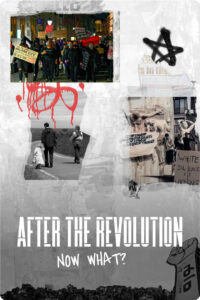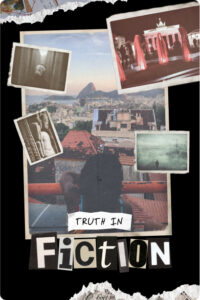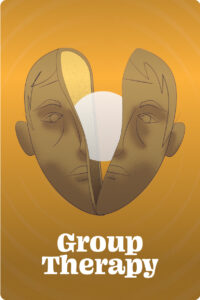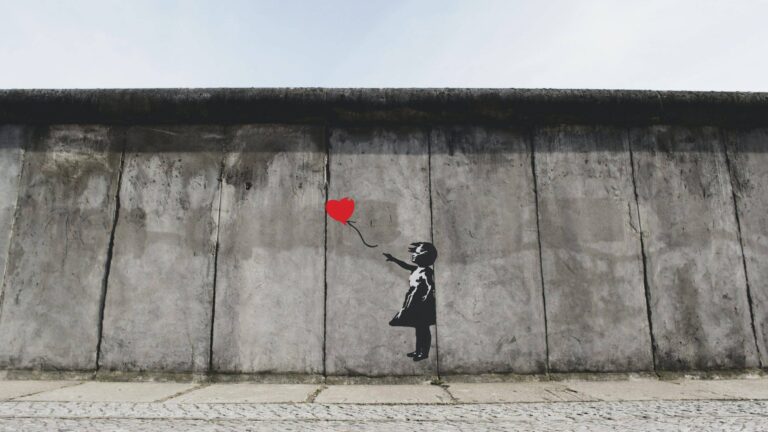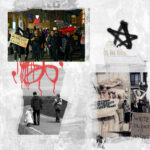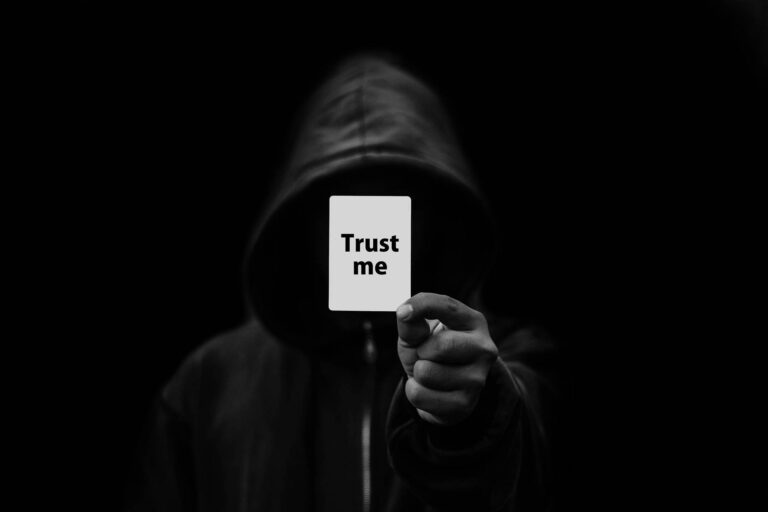I’ve been a fan of Massive Attack since forever, and the city of Bristol has always fascinated me. I dragged my dirty sneakers around there over twenty years ago. At the time, I was writing scribbles for urban culture magazines – even though I hate that expression – and I had followed the rap group Saïan Supa Crew, made up of fun lads who have since separated and gone very different ways. But back to Bristol, early 2000s. The editor-in-chief asks me if I want to follow the UK leg of the Saïan tour. The group was a critical success abroad. I had just come back from a several week vacation in Morocco. I was opening my dented letter box in the lobby of the Cortina tower in the Olympiades district in Paris when I got the phone call. It was July, and I was more or less single (it was complicated). There weren’t any crying mouths to feed, there was no alimony to pay, the Chinatown towers were rapidly becoming pressure cookers, and I had no plans for the following week. And then there was Bristol. Who could say no to Bristol, even when you would have to sleep in a tour bus heavy with the aroma of overworked and overtired human bodies?
The raw and unadulterated truth, my friends, is that I didn’t see any of it. All I saw of Bristol was a concert venue and a small sleepy road. I spent my time listening to the band do their soundcheck on stage, a word I prefer to the French term balances (audio balancing) which is more heavily connoted. When you’re reporting, you spend ages chatting with the members about everything and nothing, eating with them, and waiting. You’re always waiting for something with rappers. But even the rappers themselves, who are always dog tired, sweating profusely, starving and thirsty aren’t exactly up to a long and in-depth interview after shows. And then there are the managers, the tour manager, the guy from the record label, the road manager, and a few other parasites orbiting around, what we call the ‘entourage’ in polite society. I’m speaking as a journalist who specializes in musical coverage – this is hardly limited to the Saïan Supa Crew. I didn’t see any of Bristol. I wasn’t struck dead by the city’s terrestrial beauty, or by Massive’s abrasive soul. I left in the early morning, on a bus headed for London.
But here I am in the ‘hipster’ Stokes Croft and its somewhat annoying bohemian chic vibe, with Chris, a Deliveroo delivery man by day, and an independent photographer by night, in search of a kind of soul of the city…
20 years later.
Not long ago, I returned to Bristol. I wanted, in a very pretentious way, to unravel the mystery of the city. The city of Massive Attack, Banksy, Portishead, and Tricky. The world capital of street art, even though I know Vitry-sur-Seine would like to compete for that title. Bristol, the rebel: when the agri-food industry giant Tesco tried to establish itself in the neo-beatnik neighborhood of Stokes Croft – the super expensive and super progressive thoroughfare of Bristol – the locals resisted, clashing with the police. But as I stroll up Stokes Croft with my photographer buddy Chris, who is originally from Bristol, I start to feel skeptical. I’m not sure why. It might be because, in gourmet bars, I am offered nouvelle cuisine specialties at 20 pounds per plate – all served by a tattooed and bearded bistrologer explaining the quantum physics of a perfectly cooked fish – but I find it to be a bit expensive for a cooking course. I feel like the city is uncompromising. Hear me out – in my mind, Bristol was the city of freedom and creativity. A city that had produced an entity like Massive Attack could only be that, couldn’t it? But here I am in the ‘hipster’ Stokes Croft and its somewhat annoying bohemian chic vibe, with Chris, a Deliveroo delivery man by day, and an independent photographer by night, in search of a kind of soul of the city, a multi-sequential vortex that nourished the whirlwind soul of Massive, Tricky, Portishead, and Banksy, left to knock on doors of random people, asking them where we could find Robert Del Naja, the members of Portishead, or even Adrian Nicholas Matthews Thaws – better known as Tricky.
“Tabloid journalists from all over the country came to Bristol and offered people crazy money for Banksy’s name and address, but nobody talked. Bristol still stands in solidarity with Banksy,” Chris tells me in between 8 pound teas. At this rate, soon I won’t have a single cent left, and I’ll end up begging for loose change in front of the Hamilton House – the solar temple of counterculture where you still have to cough up a fistful of cash for a mug of hot water. Or I’ll end up like Angus, a street artist from Toulouse who I got in touch with while I was in Paris, who spends his time painting houses in Bristol in return for payment. Sometimes I do marker drawings of cartoon characters, gangsters with bulging eyes and shaggy hair. It might earn me enough to go back to Paris Sud.
Angus is a street artist who is doing pretty well, but doesn’t have the overblown ego or what I call a “licensed wall” complex. Res One, a graffiti purist and member of a group of wild vandal painters in the city, the DBK (Dirty Bristol Kidz), would tell me with no hint of exaggeration: “We have kids covering the whole city, and who run the risk of going to prison, and then you have all those artists subsidized by the city who draw cute things on walls. That right there is the New Bristol.” According to him, Bristol first started to lose her soul in 2006 when Massive Attack left the local scene, with one of those incredibly tedious business agreements in the phonographic industry that inevitably result in ‘Best of’ albums – a polite way of leaving without slamming the door. When did Bristol stop being the best-kept secret in the Kingdom? “2010,” shoots Res One, “when they started doing conferences and street art tours for seniors and primary school classes.”
Some of you probably think that Res One is ranting and raving a bit. I like it when cities are covered in colors and pastels, but I still find it ironic when dudes who made vandalism calls to the police reporting graffiti on the façade of their building now drool over artwork done in tangy and refreshing colors – like a mandarin sorbet – probably done by the same vandal who defiled the walls of his joint ownership property ten years ago.
In Angus’ beater with my homeboy Chris, I’m still trying to capture some of Bristol’s soul. Bristol has spoiled me with its quality bud, I cannot deny that the local artists are generous with their aromatic and flavorful weed. But I didn’t come for the pot, I came to find the Gestalt of Bristol.
“Can you take us to Knowles West?” I ask Angus.
“No problem, mate.”
The pose he strikes is cool, natural, and authentic, like his mother gave birth in a photo booth.
Cool, natural et authentic.
We roll along Raleigh Road for a while, an artsy asphalt artery emblematic of the street art festival Upfest. The enormous shuttered tobacco factory was converted into a hip, festive and alternative location, where there is nothing alternative about the price of beer. A cankerous tongue of tarmac comes between Knowles West and the rest of Bristol. The south-west of the city is a depressing grid of roads and dreary council housing units. I get out of the car like I was born here. That’s kind of my personal method for blending into any urban landscape. The three beefy proles with faded tattoos pacing the block are completely indifferent to my existence. Chris snaps a few shots: even cooler than a burst of trip-hop.
The tires of two black kids’ BMXs screech on the worn-out macadam of the silent white ghetto. They remind me of Tricky, who grew up in the middle of a white family, in the same social housing that a single street artist has deigned to tag. Angus and I push open the chain link door to an empty basketball court – as if the whole neighborhood were a ghost town. Usually, ghettos are loud and full of life, like a legal adult bent on social dislocation. But there are no screaming kids here, no men playing dice or cards, no woman giving their vocal chords a work-out at a negligent or inattentive boyfriend. What kind of inspiration could this neighborhood have given Tricky? The incredible life in this area in the 80s and 90s has died like a murmur in an old man’s toothless mouth, like the Queensbridge neighborhood in Queens, New York. A car rolls up alongside us. It’s likely dealers who want to make a few bucks, thinking that Angus, Chris, and I are informed buyers based on our looks.
Once again, disappointment weighs heavily on my shoulders like a huge backpack.
We return to the center of town with Angus, and Chris and I cross Stokes Croft, heading to the Jamaican suburb St Pauls, into the middle of yardie – from the Caribbean gangs that ruled the street in the 80s – territory. I’m walking through the middle of the council estates (the British version of the French HLM), rectangular houses with 5 or 4 stories at their tallest, when I run across a guy with his ass parked on the hood of a brand new German sedan, eating chicken creole from a Styrofoam container.
“Enjoy!”
“Thanks, mate!”
I hear the audio of a CD coming from the beater’s stereo system. The speakers are banging.
“Nice sound, is that you?”
“Yep,” the punk answers, “it’s pure grime*. The return of Bristol’s true sound.”
“Can my buddy take a picture of you? It’s for a magazine.”
“No problem, man.”
The pose he strikes is cool, natural, and authentic, like his mother gave birth in a photo booth.
Cool, natural et authentic.
He talks about the St Pauls riots in 1980.
April 2nd, 1980, a police raid on the Black and White Café on Grosvenor Road, the main roadway of the area. This bar – a haunt for Afro-Caribbean youths is suspected of being the HQ of a major hard drug den. Against a background of tensions with the police, allegations of brutality and racism on their part, the neighborhood erupts. It’s the same story in May of 1987. Once again, the zone reaches boiling point.
My new friend’s name is Sparface. He’s trying to make a name for himself in the local scene. Life is crazy. Ten minutes after meeting a guy for the first time and he’s telling you that he’s involved in a murder case between two mouthfuls of jerk chicken.
St Pauls biggest problem? Tenants in private housing are being expelled by real estate promoters into far-away suburbs, because St Pauls is close to Stokes Croft. Rents skyrocketed, sending long-time residents packing. The city hasn’t sold them the council estates, thank God, which explains the dealers in the area – occasionally some of them settle old scores with the help of a 9mm. These little turf wars, Sparface explains, scare some of the households of bohos who ride eco-friendly cargo bikes, but the wheels of gentrification are already in motion. He points at the dreary houses, all the while chowing down on his chicken. “So far, I’m not affected by it, but that could change! (laughter). The neighborhood still lives up to its reputation. In the 80s and 90s it was really sketchy, up until the early 2000s, artists who came for the carnival were robbed blind in the middle of the street, blades and then guns settled feuds. Gangs were in control of all the streets you can see. Nowadays, there’s only one social center for the whole neighborhood. Kids come home from school and find themselves hanging around in the streets. Before, you could get access to a municipal studio to record your demo, but now it’s more complicated. The city is making budget cuts.”
Help us tell the world to you !
Frictions is launching its club : by supporting Frictions, you’ll be supporting a community of authors and journalists who tell the world through intimate stories!

I scan the road, a bit let down. Is the spirit of St Pauls dying?
“What do you rap about?”
“I rhyme about crime, drugs, just stuff from my day-to-day life, to be honest. I’m trying to make some cash. I’ll find my way, with or without music, but some guys are getting big in London and on the national level, which gives me hope. Bristol hip-hop is back on track. I rhyme on all sorts of beats, trap**, grime.”
He has just finished up a mixtape, All I Can See where he openly describes daily life in St Pauls. “We sell coke, pot, all kinds of substances here. That’s easy money. There aren’t a ton of opportunities for kids around here.”
“And what about the spirit of Massive Attack? Does Massive Attack’s music still have an influence in the city?”
“Who?”
“The band, Massive Attack.”
“Sorry man, I haven’t heard of them.”
My journey draws to a close. In two days, I’ll go home to Paris, likely more depressed than ever. The soul of Bristol won’t be in my luggage. Christ tries to cheer me up by telling me jokes about Bristol. The good old days.
Thanks, Chris.
I make this story out to all the people in Bristol who opened their homes, their recording studios, and their neighborhoods to me.
* client en argot
* grime is a genre of electronic music that emerged in London in the early 2000s: It draws influences from jungle, dancehall, and hip-hop.
** trap is a music genre that became popular in the United States in the early 2010s.

